
Escape. That’s the point, isn’t it? It’s why Walt Disney built a protective berm around Disneyland over sixty years ago, and why we flock to the parks today. We want to escape our ordinary lives, become heroes, and be carried away into cinematic worlds designed (very intentionally) by filmmakers. The best theme parks bring us to unthinkable places and unimaginable times, presenting unbelievable sights that change us, spark us, and inspire us to learn more.
Here at Theme Park Tourist, we’re determined to celebrate those rides that carry us away… (Even the ones that closed forever – which is why our renowned Lost Legends series has told the in-depth stories behind rides like Journey into Imagination, TOMB RAIDER: The Ride, Kitchen Kabaret, Adventure Thru Inner Space, Maelstrom, and so many more.)
But not all classics are closed! That’s why our brand new Modern Marvels series has already whisked us away into the ancient tombs of Revenge of the Mummy, to the unthinkable wonders within Mystic Manor, and into the streets of our favorite comic book with The Amazing Adventures of Spider-Man. But today, we induct another unimaginable wonder into our Modern Marvels series… a ride that many argue is the greatest modern E-Ticket ever; the absolute pinnacle of what Disney Imagineering can create; a “bucket list” thrill ride located at a must-visit Mecca for all Disney Parks fans.
Image: Disney
We can only be talking about Journey to the Center of the Earth… a contender for the best ride Disney has ever created. Today, we’ll dig deep to unearth the origins of this science-fantasy adventure, explore Disney’s long-running relationship with the works of Jules Verne, take a virtual ride, and see one of the world’s best Audio-Animatronics figures ever, concealed deep within this subterranean mystery ride. Does this Journey give up to the international hype? We’ll find out…
Great minds
If we want to understand what may be the most adventurous Disney Parks ride on Earth, we certainly need to begin with the origin of the adventure.
And when it comes to exploration, discovery, and romance, there’s no author more prolific, revered, or deeply tied to the genre than Jules Verne. The French novelist, poet, and playwright produced a library of works spanning the 19th century, but many of his best known titles belong to a 54-novel series called the Voyages Extraordinaires.
Around the World in 80 Days, 20,000 Leagues Under the Sea, and From the Earth to the Moon represent just a few of the more-than-four-dozen novels Verne produced for the series, and each is renowned not only for its perfectly-paced storytelling and detail, but for the actual information provided in each. Verne’s novels were coined “encyclopedic novels” for the wealth of information they contain, giving readers the distinct feeling that they’re actually learning about biology, geology, astronomy, botany, archaeology, and oceanography by reading.
(Verne, for his part, always brushed off the popular notion that he’d invented science fiction as a genre. He also denied any claims that he had a prophetic understanding of technology, though it’s true that – absent much available data at the time – his predictions would be proven surprisingly accurate in the 20th century; for example, it's arguable that his trajectories and measurements in From the Earth to the Moon really could get a projectile fairly close to Earth's only natural satellite…)
In any case, the exhaustive and extensive research Verne did before sending his protagonists to the deepest oceans or the farthest reaches of space created in the Voyages Extraordinaires an exhilarating, spell-binding series fill with adventure, romance, science, and exploration. Countless adaptations of his works have been seen in film, television, radio, story, and song…
But a few of his series’ standard entries have also sparked Disney Imagineers… For decades, the work of Jules Verne has inspired attractions, and each was a step toward Disney’s most incredible ride ever…. Surprisingly, Disneyland’s connection to Jules Verne goes back to July 17th 1955 – opening day!
1955 – 20,000 Leagues: The Exhibition
Image: Disney
In 1954, Walt Disney Productions unveiled a blockbuster-hit film – 20,000 Leagues Under the Sea. The first film Walt himself produced, the stunning cinematic wonder (which still holds up today) was, of course, an adaptation of Verne’s novel following the undersea exploits of the notorious Captain Nemo (played by James Mason) and his iconic vessel, the Nautilus. Coastal reefs, warships, cannibals, and an equally renowned attack by a giant squid served as memorable moments from the film, all tracing Nemo’s journey to his hidden lagoon base in the mysterious island of Vulcania.
Images: Disney
As “luck” would have it, the very next year as Disneyland prepped for opening, Walt determined that the park’s Tomorrowland wasn’t quite up to snuff (understandable given the park was 366 days from groundbreaking to opening). So, he had the sets from the hit 20,000 Leagues film shipped to Anaheim and installed as a walkthrough attraction in Tomorrowland. (Oddly, that means 20,000 Leagues was one of the few intellectual properties present in the park on opening day, alongside Peter Pan, Snow White, and Mr. Toad!)
Image: Disney
The 20,000 Leagues exhibit stuck around until 1966, even co-existing with Walt’s pride and joy, the Submarine Voyage that opened in Tomorrowland’s lagoon in 1959. Disneyland’s Submarine Voyage – fittingly for Tomorrowland – was a scientific expedition into the unknown in industrial gray subs, with riders taking on the role of research scientists exploring submersible technology (which, in 1959 at least, was as much the stuff of tomorrow’s headlines as space travel).
1971 – 20,000 Leagues: Submarine Voyage
Location: Magic Kingdom
Status: Sunk
While designers got to work developing plans for the Magic Kingdom theme park to be the anchor of the new “Disney World” project in Florida, they began the careful process of selecting what should be duplicated from Disneyland to its new, larger, master-planned sister park. The E-Ticket Submarine Voyage would make the jump to Florida, of course, but times had changed. Even by the late 1960s, submarines were hardly in the headlines of "tomorrow." So while the ride was a must-have, placing it in Tomorrowland would’ve been unthinkable.
Image: Disney
So, the project was handled to Disney Legend Claude Coats and his mentor – a new, young, fresh-out-of-school Imagineer named Tony Baxter. Brilliantly, the two redressed the Submarine ride from a scientific journey to a fantasy one, adding a few key scenes (like a run-in with a giant squid) and redesigned subs (to mimic the look of Harper Goff’s iconic Nautilus) and voila – a Fantasyland hit!
Magic Kingdom’s sub ride would go on to inspire a generation of Disney Parks fans, making its eventual demolition all the more unbearable. The ride closed in 1994 even with no plans to replace it. Its closure (or more accurately, abandonment) is regarded by many as one of the darkest moments in Disney World’s history. We chronicled the ride’s in-depth history, ride-through, and fate in its own in-depth must-read, Lost Legends: 20,000 Leagues Under the Sea.
1976 – Discovery Bay
Location: Disneyland
Status: Never built
Taking all he’d learned in his research on Jules Verne and 20,000 Leagues, Baxter returned to California after Magic Kingdom’s opening with a new project: to reinvigorate the park’s Frontierland (given that stories of the Old West and cowboys and Indians had largely faded from pop culture by the 1970s). His solution was a brand new land that continued the Frontierland story by answering the question, “What did those miners do with the gold they discovered in Big Thunder Mountain back in the 1860s?”
Image: Disney
The answer? They continued west and founded a steampunk port city of glass spires, golden towers, geysers, zephyrs, time machines, hot air balloons, lighthouses, inventors, thinkers, philosophers, and dreamers. Here in Discovery Bay, Nemo’s Nautilus would be docked in the Rivers of America (containing a simulator called Nemo’s Adventure, which would end up being the inspiration for another Lost Legend: Star Tours) – the highlight of a seaside port of explorers.
Image: Disney
Unfortunately, the land’s anchoring E-Ticket was going to be based Disney’s 1974, Jules-Verne-inspired film The Island at the Top of the World, which crashed and burned at the box office, scaring executives away from Discovery Bay entirely. We took an unforgettable walk through the never-built land in a standalone feature, Possibilityland: Discovery Bay.
1995 – Space Mountain: De la Terre à la Lune
Location: Disneyland Paris
Status: Replaced
While Tony Baxter may never have gotten Discovery Bay off the ground, he did get a chance to revisit the concept nearly two decades later when he was named the creative director for Disneyland Paris… not a simple task, given that the French press had launched an all-out assault against the very “American” Disney brand infiltrating their country... That left Baxter with the difficult job of adding as much “European” as possible to the Disneyland concept. That’s why so many of Disneyland Paris’ rides – even classics! – look so much different from ours.
Image: Disney
One of his most radical ideas? Baxter knew that the sleek, white, NASA-inspired, Space Age Tomorrowland would be of no interest to Europeans, so it was replaced entirely with a new concept called Discoveryland; a gleaming, golden seaside port that represents the future, but as it was envisioned by the past – a tomorrow that H.G. Wells, Leonardo da Vinci, or Jules Verne might’ve imagined.
Its headlining E-Ticket was a thrill. Half-submerged into a bubbling lagoon alongside the parked Nautilus stood the gleaming, brass, Victorian-steampunk Space Mountain. But unlike the more scientific exploits in American Space Mountains, Paris’ was a truly fantastic journey to the moon modeled after Verne’s novel, From the Earth to the Moon.
Image: Disney
Of course, it, too, was stripped of its fantastic theming and completely redesigned as Star Wars Hyperspace Mountain: Rebel Mission, as chronicled in the outstanding Lost Legend: Space Mountain – De la Terre à la Lune feature that’s one of our favorites.
1996 – Journey to the Center of the Earth
Location: The Disney-MGM Studios
Status: Never built
According to the fascinating account of revered Disney historian Jim Hill, by the mid-1990s Disney-MGM Studios in Walt Disney World was growing stale. The miniscule movie park was only just beginning to grow past its unfortunate "half day park" label (thanks to the 1994 opening of the Twilight Zone Tower of Terror), but one element of the park that was suffering badly was its would-be hit: the Backlot Studio Tour.
The tram-led tour through the park's real production facilities was becoming less and less spectacular as fewer and fewer productions used the Florida studio. Imagineers were working on ideas for supercharging the Studio Tour with more staged encounters and special effects demonstrations (like Catastophe Canyon) when rumblings of a Journey to the Center of the Earth film in production caught their eyes.
Image: Disney, via Jim Hill Media
Imagineers – including Scott Sinclair – rallied behind the concept of a film themed to the Jules Verne novel and crafted an idea for a new stop on the Backlot Tram Tour. The studio trams would've entered into a studio soundstage that quickly gave way to a frigid subterranean chamber of icy stalagtites and endless caverns.
Around the corner, the tram would've driven through a fiery, sweltering underground chamber where roiling pits of glowing magma would support the sinking ruins of an ancient Atlantean city... a beautiful, hypnotic sight until guests passed under an odd, rock-like arch of undulating flattened plates... Driving against the glowing, molten surface of the Earth's core, the trams would've stalled out just as a forty foot tall subterranean worm would surface from beneath the magma, hissing and recoiling as if to strike!
Image: Disney, via Jim Hill Media
Of course, this trip to the planet's core didn't come to pass. Michael Eisner wasn't pleased with the script optioned for the Journey to the Center of the Earth movie, so Disney never made it. That also meant that the tie-in Backlot Tram Tour scene was dead in the water... another failed Extraordinary Voyage.
Hopeless?
20,000 Leagues at Magic Kingdom? Sunk.
Discovery Bay? Cancelled.
Space Mountain: De la Terre à la Lune? Grounded.
The Backlot Tram Tour's detour to the Center of the Earth? Canned.
Time and time again for the last sixty years, Imagineers watched as their attempts to include the stylized, literary, extraordinary voyages of Jules Verne fell to the wrecking ball… or worse, to a more profitable intellectual property. Today, it feels as if no Disney Parks project will be greenlit unless it’s backed by a blockbuster movie… and today, that means superheroes, Star Wars, princesses, or Pixar.
Image: Disney
There appears to be just one exception… one resort that’s shielded from the whims of the Walt Disney Company and determined to bring original stories to life… And that’s exactly where Jules Verne’s greatest novel came to life in what may be Disney’s best ride ever. Read on…
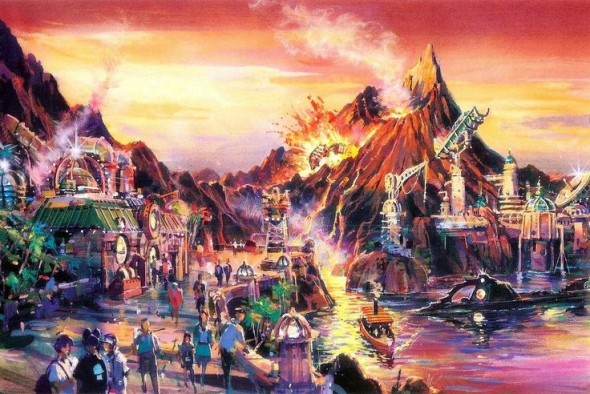
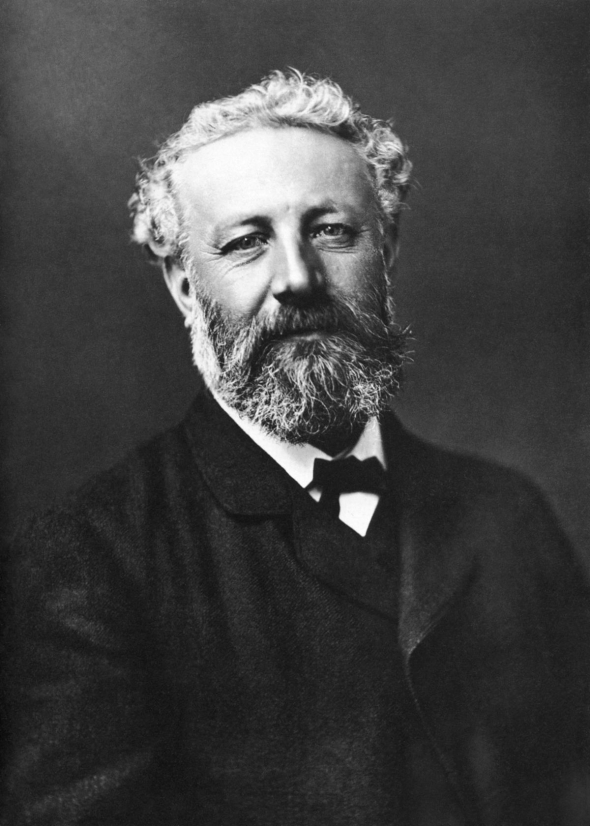

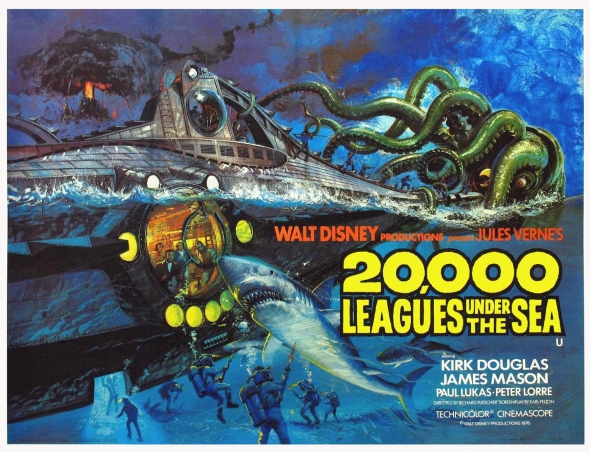
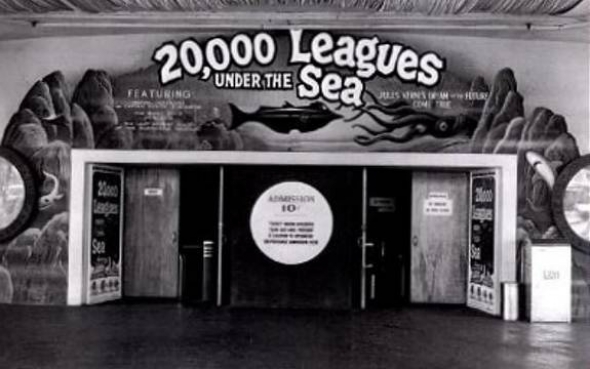
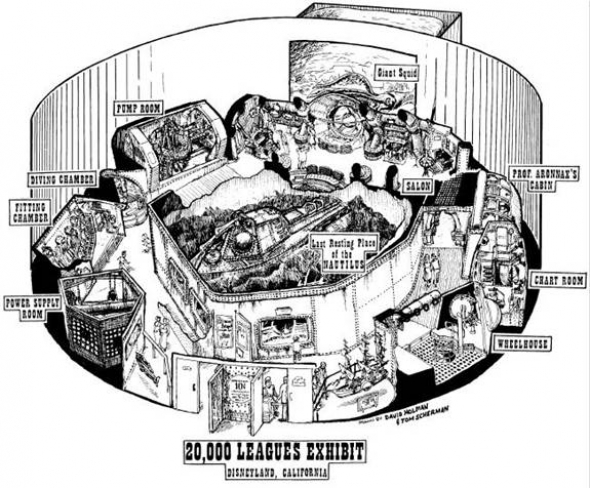
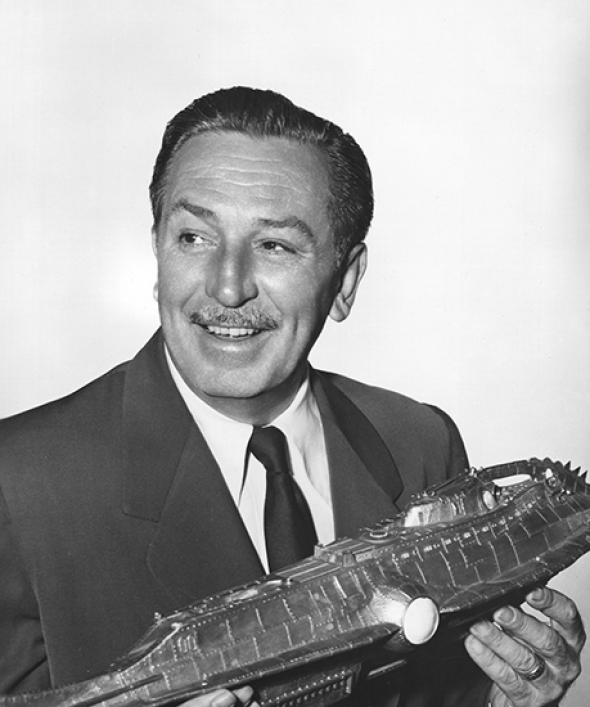
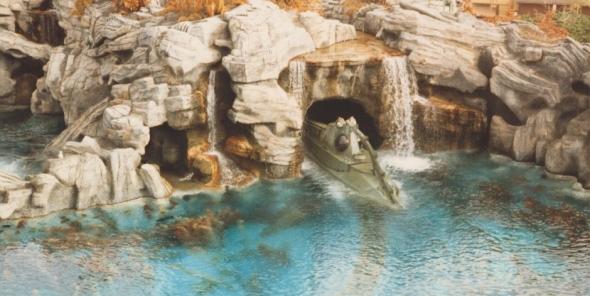
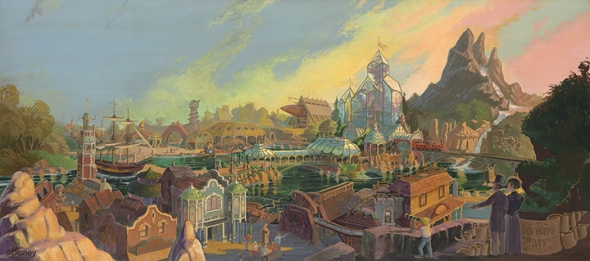
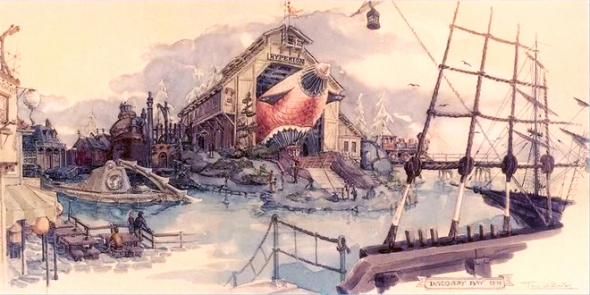
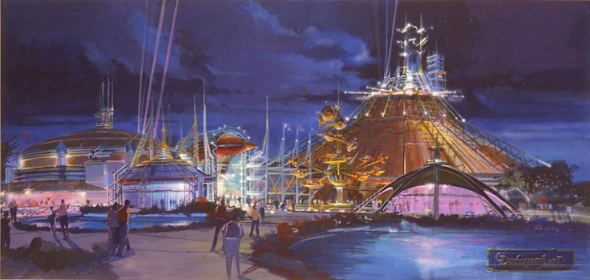
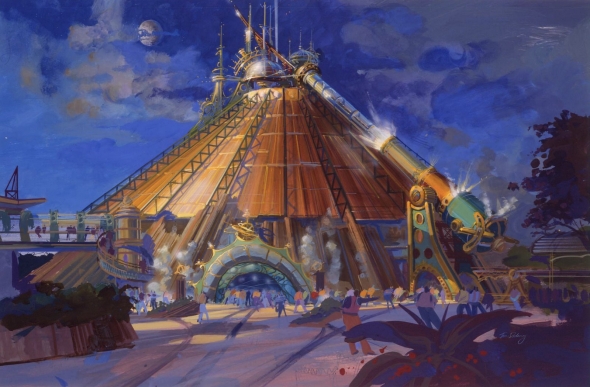
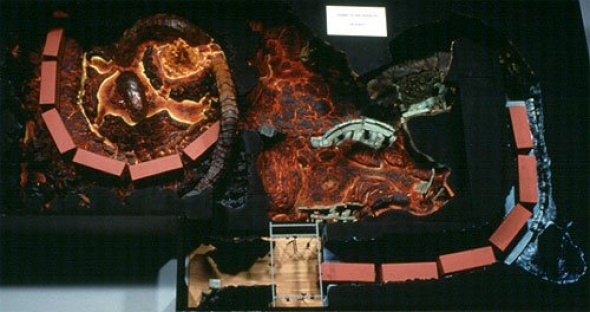
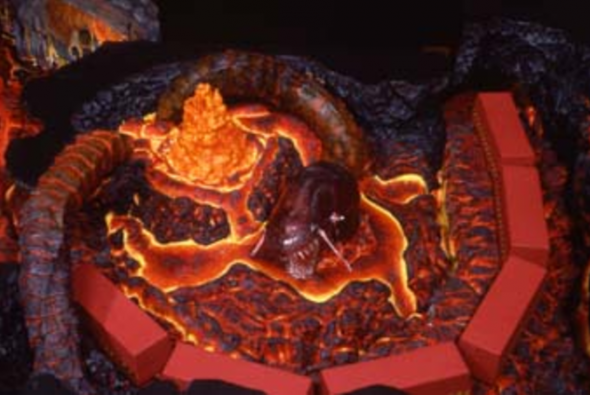
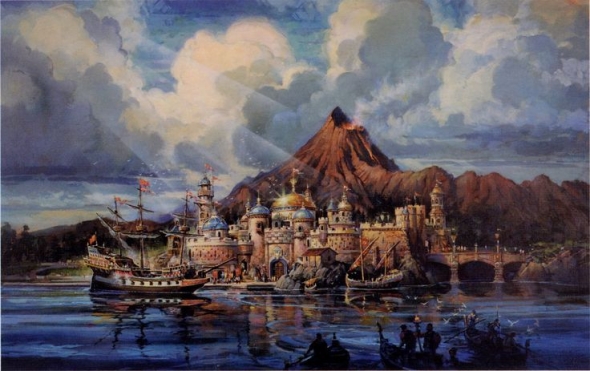

Add new comment